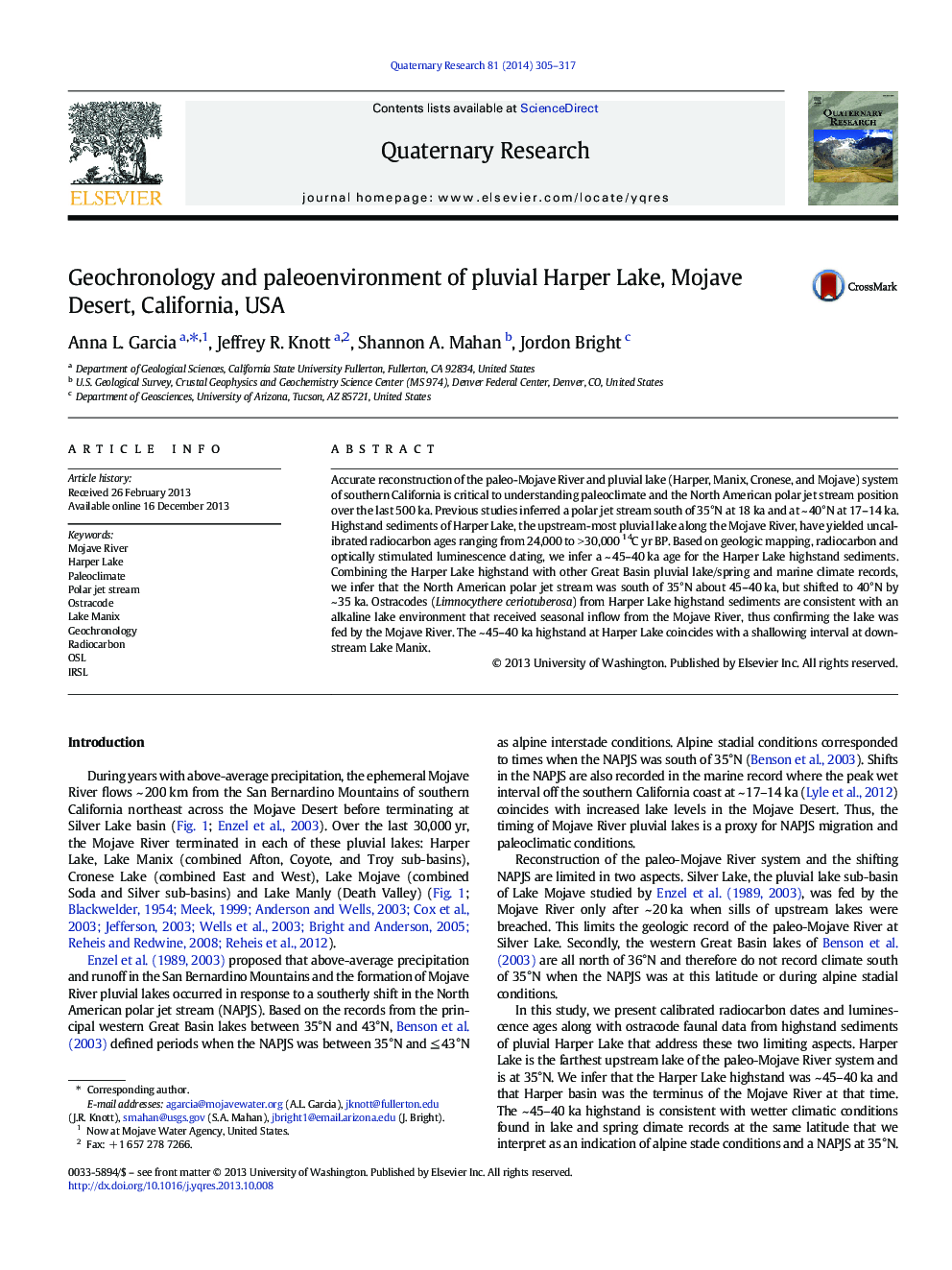| Article ID | Journal | Published Year | Pages | File Type |
|---|---|---|---|---|
| 1045255 | Quaternary Research | 2014 | 13 Pages |
Accurate reconstruction of the paleo-Mojave River and pluvial lake (Harper, Manix, Cronese, and Mojave) system of southern California is critical to understanding paleoclimate and the North American polar jet stream position over the last 500 ka. Previous studies inferred a polar jet stream south of 35°N at 18 ka and at ~ 40°N at 17–14 ka. Highstand sediments of Harper Lake, the upstream-most pluvial lake along the Mojave River, have yielded uncalibrated radiocarbon ages ranging from 24,000 to > 30,000 14C yr BP. Based on geologic mapping, radiocarbon and optically stimulated luminescence dating, we infer a ~ 45–40 ka age for the Harper Lake highstand sediments. Combining the Harper Lake highstand with other Great Basin pluvial lake/spring and marine climate records, we infer that the North American polar jet stream was south of 35°N about 45–40 ka, but shifted to 40°N by ~ 35 ka. Ostracodes (Limnocythere ceriotuberosa) from Harper Lake highstand sediments are consistent with an alkaline lake environment that received seasonal inflow from the Mojave River, thus confirming the lake was fed by the Mojave River. The ~ 45–40 ka highstand at Harper Lake coincides with a shallowing interval at downstream Lake Manix.
